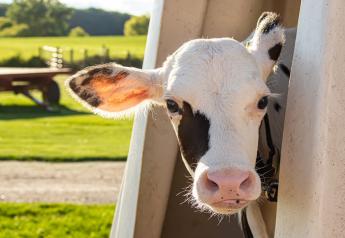Pass or Fail: The March Survival Test for Alfalfa

It’s an old agronomic adage that “March is the month when alfalfa lives or dies.”
How did it fare this year? The results will soon be evident, with signs of hopeful outcomes, according to Bill Powel-Smith, a soil health and dairy forage consultant with LandCares and GPS Dairy Consultants based in Fon du Lac, Wis. He said each winter is unique in how kindly Mother Nature treats the alfalfa crop, particularly at the tail-end of winter.
“In March, we vacillate between warm thawing conditions and sudden cold, freezing periods,” noted Powel-Smith. He said factors that feed into the condition of this year’s alfalfa crop include:
- How did alfalfa go into dormancy last fall? – Powel-Smith compared alfalfa to preweaned calves: they struggle to take in enough energy because they don’t want to eat in hot weather, and they burn too much energy off maintaining themselves in cold weather. “Alfalfa is the same way,” he stated. “These plants need energy reserves going into winter so they can come out of dormancy in spring and have enough energy to grow and begin photosynthesis with green up.” In a challenging start to spring, those reserves are at risk of falling short, especially if the last fall cutting was taken late and did not allow for at least six weeks of regrowth before dormancy.
- What did we have for ground freeze and snow cover this winter? – Snow cover is highly protective of alfalfa. This past winter, the snow came early in many parts of the upper Midwest in Fall 2022, before the ground was really frozen hard. The soil temperature has remained relatively warm, even through the coldest parts of winter. Powel-Smith said the goal is to maintain soil temperatures over 20°F at four inches deep, which mostly was achieved this year.
- Did we get a January thaw that created ponding and ice sheets? -- Little ponding has occurred this year thanks to most of the moisture going into the soil. But some areas have had ice sheets, which can disrupt the exchange of gases as alfalfa plants carry on respiration through the winter. If ice sheets trap the roots and crowns, they may be deprived of oxygen from the soil, and exposed to toxic gases like carbon dioxide, ethylene, and methanol that can’t escape. Some plants may die as a result. Again, late fall regrowth is helpful because it can help ice-covered plants breathe.
- How are we emerging from winter? – Here’s where March comes in. Alfalfa roots can be snapped during vacillating freeze-thaw cycles, or pulled out of the ground during soil heaving. “If spring is slow to warm up, we can see crown rot and other root diseases in damp soils,” advised Powel-Smith. “Roots turn from bright white to tan with blackened streaks.” He said over time, these root issues weaken the plants. Some will green up but fade before first cutting; others may make a first crop but struggle after that.
Powel-Smith advised evaluating alfalfa roots and crowns by digging samples in late April and again in early May. “Be careful making your alfalfa-stand-health decisions too soon,” he stated. “Things can turn on you based on how the plants weathered the last six months.”
To help navigate decision-making if significant winter kill is observed, South Dakota State University has issued this helpful bulletin on winter-kill recovery strategies.







